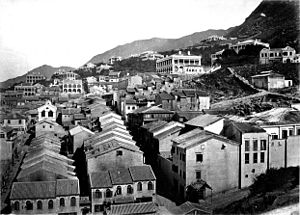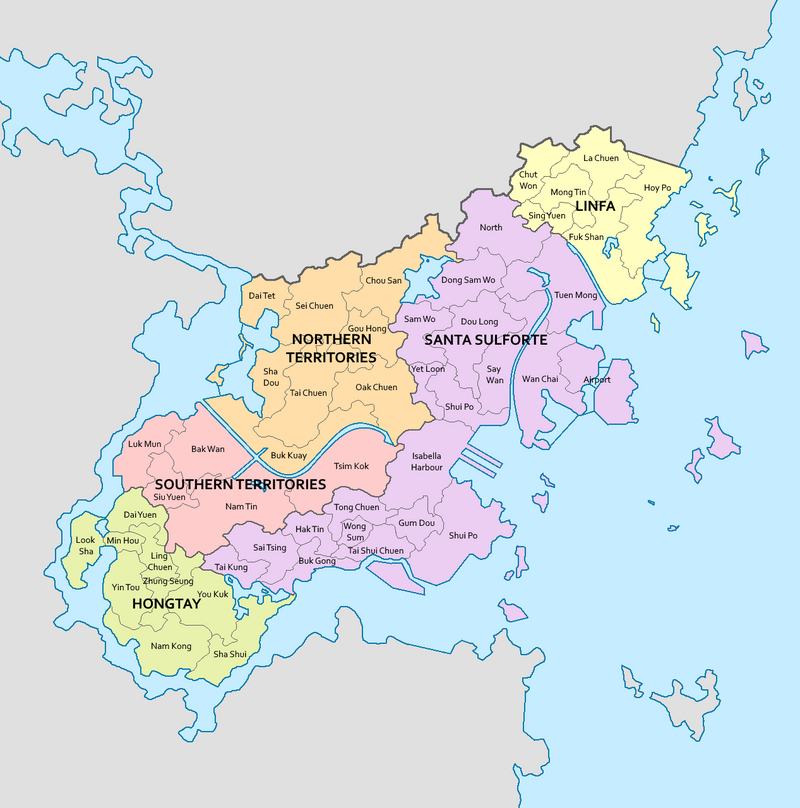Hoy Kok: Difference between revisions
Philimania (talk | contribs) |
Philimania (talk | contribs) |
||
| Line 87: | Line 87: | ||
== Etymology == | == Etymology == | ||
'' | The first known written record of the name "Hoy Kok", rendered as "Hueoy Guk" is found in a letter dated 16 Pusper 1821. Although the source of the [[alaricanised]] name is unknown, it is generally believed to be an early phonetic rendering of the [[Qiuese language|Qiuese]] phrase ''hói gok''. The name translates as "sea corner". Which may have referred to the fact that the region of Hoy Kok's location is known as 東海界 (east sea border). The simplified name Hoy Kok was frequently used by 1830. The name was also commonly written as the single word Hoykok until 1952, when the government officially adopted the two-word name. Some corporations and organisations founded during the early colonial era still keep this name, including [[Hoykok Electric Company]], [[Hoykok Hotels]], [[Hoykok-Sulforte Banking Corporation]], and [[Hoykok Department of Healthcare]]. | ||
== History == | == History == | ||
Revision as of 11:22, 30 August 2022
This article is a work in progress. Any information here may not be final as changes are often made to make way for improvements or expansion of lore-wise information about Gentu. Please comment on this article's talk page to share your input, comments and questions. Note: To contribute to this article, contact User:Philimania. |
State of Hoy Kok | |||||||
|---|---|---|---|---|---|---|---|
Motto: "Amizade, Amor, Paz" ("Friendship, Love, Peace") | |||||||
Anthem: X | |||||||
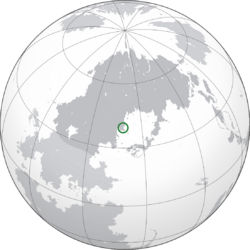 Location of Hoy Kok (Green) in Hesterath (Dark Grey) | |||||||
| Capital | Hoy Kok (city-state) | ||||||
| Largest district | Santa Sulforte | ||||||
| Official languages and national languages | Qiuese Palon | ||||||
| Ethnic groups (1997) | 65.9% Hoy Kokese 23.7% Qiuese 8.2% Palon 2.2% Others | ||||||
| Religion | 41.3% Terranity 32.8% No religion 16.7% Kaoism 6.7% Weilism 2.5% Others | ||||||
| Demonym(s) | Hoy Kokese | ||||||
| Government | Devolved gubernatorial republic | ||||||
• Governor | Ernesto Ng | ||||||
| Sofia Siu | |||||||
| Paulo Tsang | |||||||
| Legislature | National Council | ||||||
| Establishment | |||||||
| 13 Pusper 1823 | |||||||
| 20 Tebax 1953 | |||||||
| 1 Enero 1990 | |||||||
| 8 Enero 1990 | |||||||
| Area | |||||||
• Total | 4,338 km2 (1,675 sq mi) (X) | ||||||
• Water (%) | 8.3% | ||||||
| Population | |||||||
• 1999 estimate | |||||||
• 1998 census | |||||||
• Density | 11,325/km2 (29,331.6/sq mi) (X) | ||||||
| GDP (PPP) | 1995 estimate | ||||||
• Total | |||||||
• Per capita | |||||||
| GDP (nominal) | 1999 estimate | ||||||
• Total | |||||||
• Per capita | |||||||
| Gini (1998) | medium · X | ||||||
| HDI (1996) | 0.847 very high | ||||||
| Currency | Hoy Kok Ober (HKO, HKØ) | ||||||
| Time zone | MTS-6 (Hoy Kok Time) | ||||||
| Driving side | right | ||||||
| Calling code | X | ||||||
| Internet TLD | .hk | ||||||
| |||||||
Hoy Kok (Palon: Marcanta, Qiuese: 海角, Jyutping: Hoi2 Gok3), officially the State of Hoy Kok, is a country in Hesterath located in the northern Red River Estuary by the Horapon Sea. With a population of about 49,126,800 and an area of 11,325 km2 (29,330.1 sq mi), it is the X populated region in Gentu.
Formerly a Palon colony, the territory of Palon Hoy Kok was ceded to Palon as a trading post by the Nanchao dynasty in 1823. The colony remained under full Palon rule until 1953 when the Treaty of Beimen granted Hoy Kok a semi-autonomous status. Hoy Kok eventually gained full independence in 1990 in a referendum making it the most recent sovereign state or country with widespread recognition as of 2000. The unique blend of Palon and Qiuese architecture in the country's historic center led to the rise of its tourism industry in 1992.
Originally a sparsely populated network of villages, Hoy Kok has become a strategic port in the Horapon Sea and a top destination for tourists. Hoy Kok's GDP per capita by purchasing power parity is ranked X in Gentu. It has a very high Human Development Index, as calculated by the Hoy Kok government, and the X-highest life expectancy in Gentu. The country is highly urbanized; four-fifth of the total land area is built on land reclaimed from the sea.
Etymology
The first known written record of the name "Hoy Kok", rendered as "Hueoy Guk" is found in a letter dated 16 Pusper 1821. Although the source of the alaricanised name is unknown, it is generally believed to be an early phonetic rendering of the Qiuese phrase hói gok. The name translates as "sea corner". Which may have referred to the fact that the region of Hoy Kok's location is known as 東海界 (east sea border). The simplified name Hoy Kok was frequently used by 1830. The name was also commonly written as the single word Hoykok until 1952, when the government officially adopted the two-word name. Some corporations and organisations founded during the early colonial era still keep this name, including Hoykok Electric Company, Hoykok Hotels, Hoykok-Sulforte Banking Corporation, and Hoykok Department of Healthcare.
History
Prehistorical Era and dynastic rule
The earliest known trace of human life in what is now Hoy Kok dates back to around 20,000 years ago during the Upper Vetuslithic. Discovered in 1987, archaeological works revealed stone tools from deposits that were dated using optical luminescence dating.
During the Novalithic Age, about 5,000 years ago, the region had been widely occupied by humans. Novalithic to Cuprulithic and then to Bronze Age Hoy Kok settlers were semi-coastal people. Early inhabitants are believed to be Hayosun people in the Novalithic Age and later the Qiuese people. As hinted by the archaeological works in Mong Tin, Linfa, rice cultivation had been introduced since the late Novalithic Age. Bronze Age Hoy Kok was featured with coarse pottery, hard pottery, quartz and stone jewelry, as well as small bronze implements.
The Qiu dynasty incorporated Hoy Kok into the dynasty in 267 BCE after conquering the indigenous people of the region. During the Haidao Rebellion in 199 BCE, a series of forts were built in the region. Control over these forts changed 4 times during the rebellion before the Xin government was toppled in 173 BCE and the Zhang dynasty was established. During the Juksan conquest of Wei in 618, the capital of the Wei dynasty was briefly relocated to X in modern day X before its defeat in 629 at the Battle of Zaohai. By the end of the Two Kingdoms period in 1043, 8 large families had settled in the region and owned most of the land.
Palon colony
The earliest Oranish visitors was Neragese explorer John Leon who arrived in 1498. Neragese merchants soon established a trading post called Ezran in modern day Shui Po (south) and began regular trade with southern Zhao. Military clashes between the Zhao and Neragese navies followed the expulsion of the Ezran traders in 1524. In 1823, the Nanchao dynasty ceded 118 square kilometres of land in present day Santa Sulforte to the Palon Empire as a trading post in the Palonic-Nanchao agreement. The initially small population of Palon merchants rapidly became a growing city. By 1833, the Hoy Kok Council had been established to handle municipal affairs for the growing settlement. Hoy Kok was at the peak of its prosperity as a major entrepôt during the late 19th century, providing a crucial connection in exporting Nanchao silk to Oranland. Although the Palons were initially prohibited from fortifying Hoy Kok or stockpiling weapons, Fortaleza do Sabã was constructed in response to frequent Paqueon naval incursions. The Paqueon attempted to take the city in the 1823 Battle of Hoy Kok during the War of Palon Succession, but were repelled successfully by the Palons.
The colony was further expanded in 1868 when Paloa bought the Northern and Southern Territories. The University of Hoy Kok was established in 1882 as the colony's first institution of higher education. Tay Mun Airport began operation in 1917, and the colony avoided any conflict during the Great War. In 1953, following a series of protests regarding the new Prime Minister of Paloa, the Treaty of Beimen was created which granted Hoy Kok a semi-autonomous status. The population of Hoy Kok boomed in the late 1950s and early 1960s as skilled Nancaho migrants and refugees fled from the Nanchao Civil War. With a rapidly increasing population, the colonial government began reforms to improve infrastructure and public services. The public-housing programme, universal healthcare programme, and Extensive Uuderground Transit were all established during the 1960s and 70s decades to provide safer housing, integrity in the civil service, and more reliable transportation. By the early 1980s, Hoy Kok had established itself as a global financial centre and shipping hub.
Independence
In Disemba of 1989, a referendum known as the 1990 Hoy Kokese independence referendum was held to decide if Hoy Kok wanted full independence all continue being a semi-autonomous colony of Palon. The referendum ended on the 31st of Disemba 1989 with 26,439,204 voters voting for independence while 11,284,842 voters picked to stay as a colony. On the 1st of Enero 1990, Hoy Kok was officially granted independence and 7 days later on the 8th of Enero, its constitution would be published.
Geography
Hoy Kok is situated at the mouth of the Red River. It is surrounded on all sides by the Horapon Sea except for the west which neighbours X. The country's 4,338 km2 (1,675 sq mi) area comprises of the districts of Hongtay, Santa Sulforte, Southern Territories, Northern Territories, and Linfa. The tallest point is Taigo Shan which is 974.4 metres tall (3,196.85 ft). Urban development is concentrated in Santa Sulforte, Hongtay, and Linfa, with smaller settlements dotted throughout the Northern and Southern Territories. Much of Hoy Kok is built on reclaimed land; X km2 (X sq mi) is reclaimed from the sea.
Undeveloped terrain is hilly to mountainous, with very little flat land, and consists mostly of grassland, woodland, shrubland, or farmland. About 20% of the remaining land area is country parks and nature reserves. It has a diverse ecosystem; over 2,000 species of vascular plants occur in the region (500 of which are native to Hoy Kok), and thousands of insect, avian, and marine species.
Climate
Hoy Kok has a humid subtropical climate (Cfa), with an average annual temperature of 15.9 °C (60.62 °F) for urban districts and 15.3–15.8 °C (59.54–60.44 °F) for suburbs. It experiences four distinct seasons. Winters are temperate to cold and damp—northwesterly winds from northern Hesterath can cause nighttime temperatures to drop below freezing. Each year, there are an average of 5.8 days with snowfall and 1.6 days with snow cover. Summers are hot and humid, and occasional downpours or freak thunderstorms can be expected. On average, 7.2 days exceed 35 °C (95 °F) annually. In summer and the beginning of autumn, the city is susceptible to typhoons.
The most pleasant seasons are generally spring, although changeable and often rainy, and autumn, which is usually sunny and dry. With monthly percent possible sunshine ranging from 34% in Marto to 54% in Tebax, the city receives 1,895 hours of bright sunshine annually.
| Climate data for Hoy Kok | |||||||||||||
|---|---|---|---|---|---|---|---|---|---|---|---|---|---|
| Month | Jan | Feb | Mar | Apr | May | Jun | Jul | Aug | Sep | Oct | Nov | Dec | Year |
| Record high °C (°F) | 22.1 (71.8) |
27.0 (80.6) |
29.6 (85.3) |
34.3 (93.7) |
36.4 (97.5) |
37.5 (99.5) |
39.2 (102.6) |
39.9 (103.8) |
38.2 (100.8) |
34.0 (93.2) |
28.7 (83.7) |
23.4 (74.1) |
39.9 (103.8) |
| Average high °C (°F) | 8.1 (46.6) |
10.1 (50.2) |
13.8 (56.8) |
19.5 (67.1) |
24.8 (76.6) |
27.8 (82.0) |
32.2 (90.0) |
31.5 (88.7) |
27.9 (82.2) |
22.9 (73.2) |
17.3 (63.1) |
11.1 (52.0) |
20.6 (69.0) |
| Daily mean °C (°F) | 4.8 (40.6) |
6.6 (43.9) |
10.0 (50.0) |
15.3 (59.5) |
20.7 (69.3) |
24.4 (75.9) |
28.6 (83.5) |
28.3 (82.9) |
24.9 (76.8) |
19.7 (67.5) |
13.7 (56.7) |
7.6 (45.7) |
17.1 (62.7) |
| Average low °C (°F) | 2.1 (35.8) |
3.7 (38.7) |
6.9 (44.4) |
11.9 (53.4) |
17.3 (63.1) |
21.7 (71.1) |
25.8 (78.4) |
25.8 (78.4) |
22.4 (72.3) |
16.8 (62.2) |
10.6 (51.1) |
4.7 (40.5) |
14.1 (57.5) |
| Record low °C (°F) | −10.1 (13.8) |
−7.9 (17.8) |
−5.4 (22.3) |
−0.5 (31.1) |
6.9 (44.4) |
12.3 (54.1) |
16.3 (61.3) |
18.8 (65.8) |
10.8 (51.4) |
1.7 (35.1) |
−4.2 (24.4) |
−8.5 (16.7) |
−10.1 (13.8) |
| Average precipitation mm (inches) | 74.4 (2.93) |
59.1 (2.33) |
93.8 (3.69) |
74.2 (2.92) |
84.5 (3.33) |
181.8 (7.16) |
145.7 (5.74) |
213.7 (8.41) |
87.1 (3.43) |
55.6 (2.19) |
52.3 (2.06) |
43.9 (1.73) |
1,166.1 (45.91) |
| Average precipitation days (≥ 0.1 mm) | 9.9 | 9.2 | 12.4 | 11.2 | 10.4 | 12.7 | 11.4 | 12.3 | 9.1 | 6.9 | 7.6 | 7.7 | 120.8 |
| Average relative humidity (%) | 74 | 73 | 73 | 72 | 72 | 79 | 77 | 78 | 75 | 72 | 72 | 71 | 74 |
| Mean monthly sunshine hours | 114.3 | 119.9 | 128.5 | 148.5 | 169.8 | 130.9 | 190.8 | 185.7 | 167.5 | 161.4 | 131.1 | 127.4 | 1,775.8 |
| Source: Hoy Kok Observatory | |||||||||||||
Architecture
Hoy Kok has the X largest number of skyscrapers, with 694 towers taller than 150 metres (490 ft), and the X-largest number of high-rise buildings in Gentu. Hoy Kok's large population combined with the lack of available space restricted development to high-density residential tenements and commercial complexes packed closely together on buildable land. Single-family detached homes are uncommon and generally only found in outlying areas. The CIC (Centro Internacional de Comércio) and Torre 2 of the Complexo Central de Bolsa are the tallest buildings in Hoy Kok and are among the tallest in Hesterath. Other distinctive buildings lining the Hoy Kok skyline include the X, the X, X, and X.
Demand for new construction has contributed to frequent demolition of older buildings, freeing space for modern high-rises. However, many examples of Oranish and Qiuese architecture are still found throughout the country. Older government buildings are examples of colonial architecture. The Algodão House, the residence of the governor of Hoy Kok, is the oldest Oranish-style building in Hoy Kok. Some, including the High Court of Justice (Alto Tribunal de Justiça and the Hoy Kok Observatory retain their original function, and others have been adapted and reused; the Former Colonial Hall (Salão Colonial) was redeveloped into a commercial and retail complex, and Saltar Tower houses the Hoy Kok Museum of Qiuese Art. The Fuk Shan Temple, dedicated to the goddess Feiyi originally built in 1204, is the territory's oldest surviving structure. The Hoy Kok Cultural Trail has architectural examples of several Qiuese dynasties, including the Chou San Pagoda, one of Hoy Kok's 12 remaining pagodas).
Yu Lau, mixed-use tenement buildings constructed during the colonial era, blended Qiuese architectural styles with Oranish influences. These were especially prolific during the immediate civil war period, when many were rapidly built to house large numbers of Qiuese refugees and migrants. Examples include X, the X, and the X. Mass-produced public-housing estates, built since the 1960s, are mainly constructed in modernist style.
TBA
Government
Hoy Kok has been governed under a gubernatorial republic since its independence in 1990, with the Governor of Hoy Kok as head of state. The executive branch consists of a Governor and Vice-Governor as the head of government, who both presides over the 48 members of the National Council.
Under the Constitution of Hoy Kok, the Governor and Vice-Governor shares their veto power with the National Council and are elected for a six-year term, after which they cannot run for another term. The 48 members of the National Council are elected for five-year terms; all 48 of which are chosen through a majority electoral system. All legislation requires the approval of the National Council, which is dominated by the Uma Ideia party which holds 21 seats. Muiyen holds 13 seats, Trabalhadores holds 8 seats while Antigo Novo holds 6 seat. Ernesto Ng and Sofia Siu has been Governor and Vice-Governor respectively since 1996.
Members of the judiciary of Hoy Kok are appointed by the Governor on the advice of a recommendation commission.
Administrative divisions
Hoy Kok is divided into 5 districts, each represented by a District Council. The 5 districts are divided into 48 villages. Each village have a seat in their respective district councils. They advise the government on local issues such as public facility provisioning, community programme maintenance, cultural promotion, and environmental policy.
| Current map of Hoy Kok |
|---|
Security
The wider defence of the nation is provided by X. Hoy Kok has no navy or air force to speak of, but on a per-area basis, Hoy Kok has one of the largest police forces (523 police officers for about 38,000 people) and police presences in Gentu. Its police includes a special unit which operates patrol and surveillance boats jointly with the military of X. Police forces in Hoy Kok are commanded by a X officer.
There is also a small military force. This consists of a bodyguard unit for the Governor and Vice-Governor called the Companhia de Proteção Executiva (Executive Protection Company); together with the militarised, armed fire and civil defence corps (Corpo de Defesa Civil do Marcanta) it forms Hoy Kok's total forces. The Companhia de Proteção Executiva was created by Governor João Carvalho in 1856 for the protection of the colony. The company numbers exactly 143 officers and men; while the non-commissioned officers and soldiers are local, the officers have generally served in the X and Palon Army. In addition to their guard duties as described, the Companhia patrol the principality's beaches and coastal waters.
Demographics
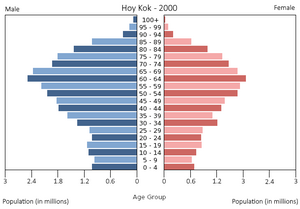
A census led by the University of Hoy Kok estimated Hoy Kok's population at 49,126,800 in 1999. 65.9% are Hoy Kokese, a people of a mixture of west Oranish and Qiuese heritage; 23.7% are Qiuese; 8.2% are Palon; and the remaining 2.2% include X and X. Around 12.8 million residents have Palon citizenship. The vast majority also hold Qiuhuese citizenship. The population density of Hoy Kok is 11,325/km2 (29,331.6/sq mi). The predominant language is Qiuese and Palon. Qiuese is spoken by 68.3% of the population, 62.2% as a first language and 6.1% as a second language. Palon is spoken by 57.9% of the population of which 43.2% as a first language 14.7% as a second language. Other languages such as Neragese, Cavalan, and Hestandan. Among the religious population, Terranity is the most popular with 41.2% of the population a member of it. It is followed by the Qiuese teachings of Weilism and Kaoism with 16.7% and 6.7% respectively. 32.8% does not have a religion and 2.5% of the population follow other religion such as Plecan and Hafan. In terms of magic, an estimated 980,000 people are of Mutamni ancestry as of 1999 with 750,000 being roughly 70% Mutamni, 130,000 identifying at about 20%, and 100,000 being around 5% Mutamni.
Life expectancy in Hoy Kok was 82.35 years for males and 87.33 years for females in 2000, the X-highest in the world. Cancer, pneumonia, heart disease, cerebrovascular disease, and accidents are Hoy Kok's five leading causes of death.
Income inequality has risen since Hoy Kok's independence, as the country's ageing population has gradually added to the number of nonworking people. Although household net income has steadily increased during the 90s decade, the wage gap remained high. Despite government efforts to reduce the growing disparity, net income for the top 10% of earners is X times that of the bottom 10%.
Economy
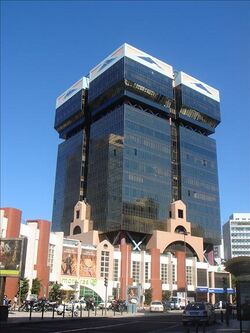
Hoy Kok has a capitalist mixed service economy, characterised by low taxation, minimal government market intervention, and an established international financial market. It is Gentu's X-largest economy, with a nominal GDP of approximately $532.945 billion. Hoy Kok's economy has ranked at the top 50 of X's economic freedom index since 1984. The Hoy Kok Stock Exchange is the X-largest on Gentu, with a market capitalisation of $4.93 trillion as of 2000. Hoy Kok is ranked as the Xth most innovative country in the Transnational Innovation Index in 1999. Hoy Kok hosts several high tech and innovation companies, including several multinational companies.
Hoy Kok is the tenth-largest trading entity in exports and imports as of 1997, trading more goods in value than its gross domestic product. Over half of its cargo throughput consists of transshipments (goods travelling through Hoy Kok). Products from X account for about 60% of that traffic. The city's location allowed it to establish a transportation and logistics infrastructure which includes the world's X-busiest container port and the busiest airport for international cargo. The country's largest export markets are X and X. Hoy Kok is a key part of the Neo-Tongxi Network. It has little arable land and few natural resources, importing most of its food and raw materials. More than 90% of Hoy Kok's food is imported, including nearly all of its meat and rice. Agricultural activity is less than 0.1% of GDP and consists of growing premium food and flower varieties. Being one of the largest manufacturing economies during the latter half of Hoy Kok's colonial period, their's economy is now dominated by the service sector. The sector generates 84.3% of economic output, with the public sector accounting for about 10%.

The government traditionally had a non-interventionist role in the economy and taxes corporations at very low rates. Since Hoy Kok's independence, administrations have generally been more involved in enhancing social welfare to counter the cyclical nature of the gaming industry. Economic growth has been attributed in large part to the high number of X visits to Hoy Kok, and the central government exercises a role in guiding casino business growth through its control of the flow of tourists. The 1995 Hoy Kok-X Economic Agreement formalised a policy of free trade between Hoy Kok and X, with each jurisdiction pledging to remove remaining obstacles to trade and cross-boundary investment.
Tourism is a major part of the economy, accounting for 7% of GDP. In 2000, 69.43 million visitors contributed $90.25 billion to Hoy Kok, making Hoy Kok the Xth most popular destination for international tourists. The city is also ranked as one of the most expensive cities for expatriates.
Infrastructure
Transport

Hoy Kok has highly developed, sophisticated transport system. According to a survey in 1998, 87% of daily trips are made on public transport, the X highest in Gentu. The Semper card, a contactless payment smart card digital currency card, is widely accepted on railways, buses and ferries, and can be used for payment in most retail stores.
Sulforte Tramways, Hoy Kok's 1st public transport system, has provided rail transport between Tai Kung and Tuen Mong village since 1892. Sulforte Tramways covers a portion of Santa Sulforte. The Extensive Underground Transit (Trânsito Subterrâneo Amplo, TSA) is an extensive passenger rail network, connecting 108 metro stations throughout the country. With a daily ridership of approximately 7 million, the system serves 57% of all public transit passengers in Hoy Kok and has an on-time rate of 99.9%. Cross-boundary train service to X is offered by the Linfa line, and longer-distance international trains to X and X are operated from Dong Sam Wo station.
Although public transport systems handle most passenger traffic, there are over 1.9 million private vehicles registered in Hoy Kok. Vehicle traffic is extremely congested in urban areas, exacerbated by limited space to expand roads and an increasing number of vehicles. More than 27,000 taxicabs, easily identifiable by their bright red colour, are licensed to carry riders in Hoy Kok. Bus services operate more than 900 routes across the country, with smaller minibuses known as the Public Microbus serving areas standard buses do not reach as frequently or directly. Highways, organised with the Hoy Kok Motorway and Routing System, connect all major areas of Hoy Kok.
Tay Mun Airport is Hoy Kok's only airport. Over 110 airlines operate flights from the airport, including Hoy Kok Airlines, low-cost airline X and cargo airline X. It is the X-busiest airport by passenger traffic and handles the X most air-cargo traffic in Gentu. Most private recreational aviation traffic flies through X, under the supervision of the Hoy Kok Aviation Club.
The Harbour Ferry operates 3 lines from Isabella Harbour for its 45,000 daily passengers, serving outlying islands inaccessible by other means. Ferry travel to X is also available. Junks, common in Hoy Kok waters, are still used privately and for tourism as well.
Healthcare

Hoy Kok is served by four major public hospital, and three major private hospital. In addition to hospitals, Hoy Kok also has numerous health centres providing free basic medical care to residents. Consultation in traditional Qiuese medicine are also available. According to a study conducted by the government in 2000, about 80% of those who qualify as a docter, nurse, or midwife comes from the Hoy Kok University of Health. However, some local nurses are traind at the Wan Chai Nursing College and the Hoy Po Academy of Nursing.
The universal public healthcare system of Hoy Kok is funded by general-tax revenue, and treatment is highly subsidised; on average, 95% of healthcare costs are covered by the government. The Department of Emergency Services is responsible for ambulance service (Ambulância de Marcanta). The Hoy Kok Serpent's Staff also operates ambulances for emergency and non-emergencies to local hospitals with volunteer staff. The organisation has a total of 49,127 uniformed firefighters and paramedics serving from 22 stations in Hoy Kok.
The Department of Emergency Services is mainly responsible for coordinating the activities between the public and private organisations in the area of public health, and assure the health of citizens through specialised and primary health care services, as well as disease prevention and health promotion. The Hoy Kok Centre for the Standardisation of Healthcare was established in 1992, which monitors the operation of hospitals, health centres, and the blood transfusion centre in Koy Kok. It also handles the organisation of care and prevention of diseases affecting the population, sets guidelines for hospitals and private healthcare providers, and issues licenses. Additionally, the Saint Paul's Hospital for the Control of Magical Accidents (CAM) treats magical disease such as Syphonpox, or the now exterminated Janseon Flu; additionally, CAM also takes care of those caught in an accidents related to magic such as potion accidents or botched rituals.
Education
TBA
Culture
Cuisine
TBA
Sports and recreation
TBA
Media
TBA
Cinema
TBA
Music

Hoypop is a genre of popular music which emerged in Hoy Kok during the 1960s. Evolving from Qiuese folk and jazz, it is also influenced by Qiuese and Zaoish opera; and Oranish pop. Local media featured songs by artists such as Vasco Mei, Safira Cheung, Gloria Tsung, and Abel Santos; during the late 1970s and early 1980s, exported films and shows exposed Hoypop to a global audience. The genre's popularity peaked in the 1990s, when it dominated Hesterish record charts. Despite a general decline since late in the decade, Hoypop remains dominant in Hoy Kok; contemporary artists such as Oscar Águas, Osvaldo Lan, and Amanda Ng are popular in and beyond the country.
Oranish classical music has historically had a strong presence in Hoy Kok and remains a large part of local musical education. The publicly funded Hoy Kok Philharmonic Orchestra, the territory's oldest professional symphony orchestra, frequently hosts musicians and conductors from overseas. The Hoy Kok Orchestra, composed of classical Qiuese instruments, is the leading Qiuese ensemble and plays a significant role in promoting traditional music in the community.




